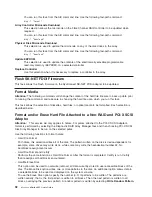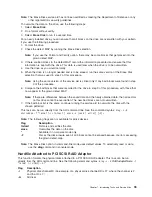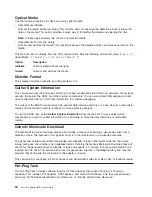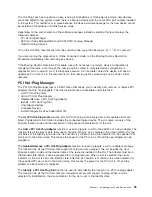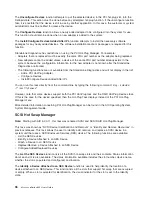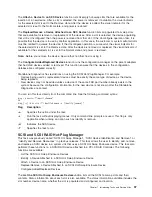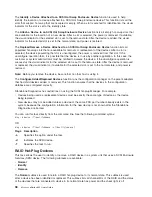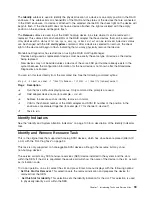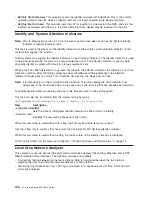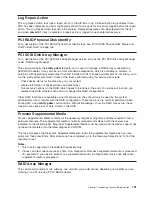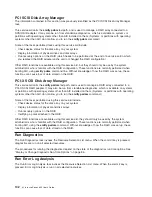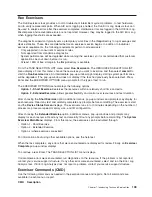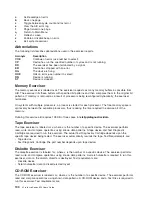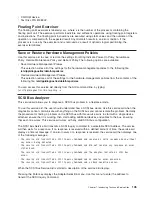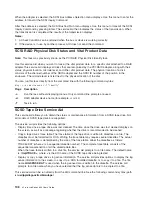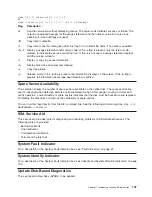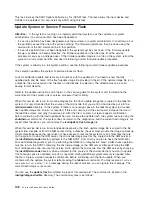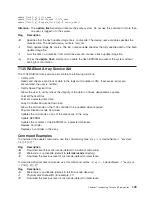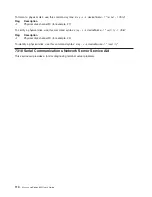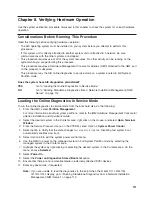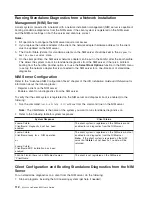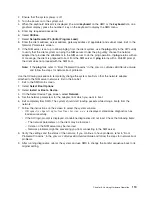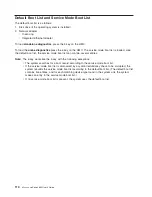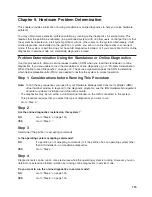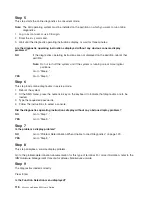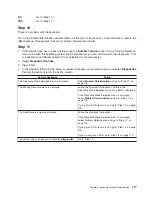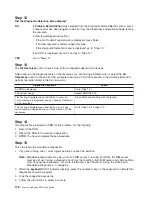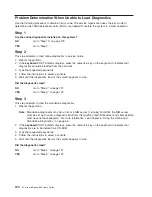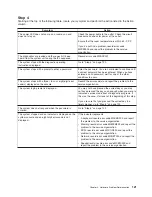
When
the
adapter
is
selected,
the
SCSI
Bus
Address
Selection
menu
displays.
Use
this
menu
to
enter
the
address
to
transmit
the
SCSI
Inquiry
Command.
After
the
address
is
selected,
the
SCSI
Bus
Test
Run
menu
displays.
Use
this
menu
to
transmit
the
SCSI
Inquiry
Command
by
pressing
Enter.
The
service
aid
then
indicates
the
status
of
the
transmission.
When
the
transmission
is
completed,
the
results
of
the
transmission
displays.
Notes:
1.
A
Check
Condition
can
be
returned
when
the
bus
or
device
is
working
correctly.
2.
If
the
device
is
in
use
by
another
process,
AIX
does
not
send
the
command.
SCSI
RAID
Physical
Disk
Status
and
Vital
Product
Data
Note:
This
task
was
previously
known
as
the
PCI
RAID
Physical
Disk
Identify
task.
Use
this
service
aid
when
you
want
to
look
at
the
vital
product
data
for
a
specific
disk
attached
to
a
RAID
adapter.This
service
aid
displays
all
disks
that
are
recognized
by
the
PCI
RAID
adapter,
along
with
their
status,
physical
location,
microde
level,
and
other
vital
product
data.
The
physical
location
of
a
disk
consists
of
the
channel
number
of
the
RAID
adapter
and
the
SCSI
ID
number
of
the
position
in
the
enclosure.
The
microde
level
is
listed
next
to
the
physical
location
of
the
disk.
You
can
run
this
task
directly
from
the
command
line
with
the
following
command
syntax:
diag
-c
-d
<
device
name
>
-T
"identify"
Flags
Description
-c
Run
the
task
without
displaying
menus.
Only
command
line
prompts
are
used.
-d
RAID
adapter
device
name
(for
example,
scraid0
).
-T
Task
to
run.
SCSD
Tape
Drive
Service
Aid
This
service
aid
allows
you
to
obtain
the
status
or
maintenance
information
from
a
SCSD
tape
drive.
Not
all
models
of
SCSD
tape
drive
are
supported.
The
service
aid
provides
the
following
options:
v
Display
time
since
a
tape
drive
was
last
cleaned.
The
time
since
the
drive
was
last
cleaned
displays
on
the
screen,
as
well
as
a
message
regarding
whether
the
drive
is
recommended
to
be
cleaned.
v
Copy
a
tape
drive’s
trace
table.
The
trace
table
of
the
tape
drive
is
written
to
diskettes
or
a
file.
The
diskettes
must
be
formatted
for
DOS.
Writing
the
trace
table
may
require
several
diskettes.
The
actual
number
of
diskettes
is
determined
by
the
size
of
the
trace
table.
Label
the
diskettes
as
follows:
TRACE
x
.DAT
(where
x
is
a
sequential
diskette
number).
The
complete
trace
table
consists
of
the
sequential
concatenation
of
all
the
diskette
data
files.
When
the
trace
table
is
written
to
a
disk
file,
the
service
aid
prompts
for
a
file
name.
The
default
name
is:
/tmp/TRACE.
x
,
where
x
is
the
AIX
name
of
the
SCSD
tape
drive
being
tested.
v
Display
or
copy
a
tape
drive’s
log
sense
information.
The
service
aid
provides
options
to
display
the
log
sense
information
to
the
screen,
to
copy
it
to
a
DOS
formatted
diskette,
or
to
copy
it
to
a
file.
The
file
name
LOGSENSE.DAT
is
used
when
the
log
sense
data
is
written
to
the
diskette.
The
service
aid
prompts
for
a
file
name
when
you
have
selected
that
the
log
sense
data
is
to
be
copied
to
a
file.
This
service
aid
can
be
run
directly
from
the
AIX
command
line.
See
the
following
command
syntax
(path
is
/usr/lpp/diagnostics/bin/utape
):
106
Eserver
pSeries
655
User’s
Guide
Summary of Contents for p 655 series
Page 1: ...pSeries 655 User s Guide SA38 0617 03 ERserver...
Page 2: ......
Page 3: ...pSeries 655 User s Guide SA38 0617 03 ERserver...
Page 10: ...viii Eserver pSeries 655 User s Guide...
Page 14: ...xii Eserver pSeries 655 User s Guide...
Page 16: ...xiv Eserver pSeries 655 User s Guide...
Page 24: ...6 Eserver pSeries 655 User s Guide...
Page 32: ...14 Eserver pSeries 655 User s Guide...
Page 36: ...18 Eserver pSeries 655 User s Guide...
Page 90: ...72 Eserver pSeries 655 User s Guide...
Page 144: ...126 Eserver pSeries 655 User s Guide...
Page 208: ...190 Eserver pSeries 655 User s Guide...
Page 214: ...196 Eserver pSeries 655 User s Guide...
Page 217: ......

